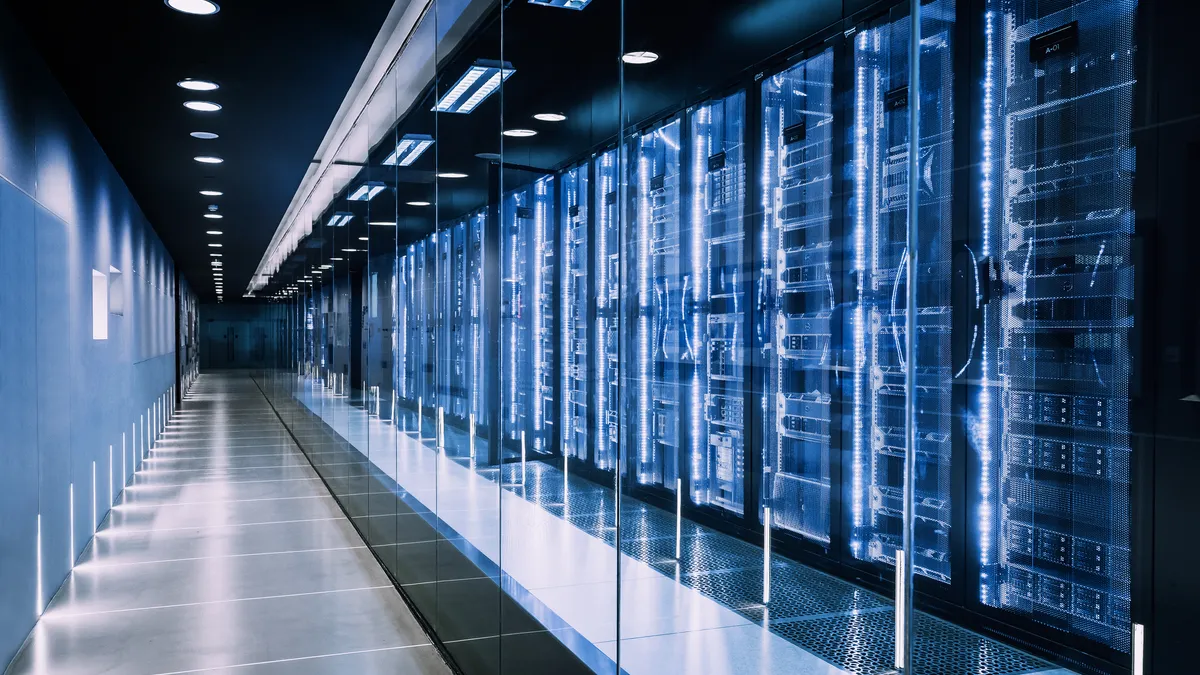The electric demand growth outlook has shifted, with data centers now expected to drive a surge in demand. This abrupt change is creating one of the biggest challenges facing the power sector, and advanced nuclear technology could be part of the solution, according to David Crane, U.S. Department of Energy undersecretary for infrastructure.
In the last decade, demand growth averaged about 0.5% a year, but people now are talking about 5% to 6% annual demand growth, Crane said Tuesday at a BloombergNEF conference in New York.
The revised outlook affects how DOE thinks about addressing future needs, according to Crane.
Two years ago, DOE generally aimed to get initial projects for emerging technologies like advanced geothermal online by around 2028, which it expected would be followed by waves of commercial deployments, so that by 2035 “all is good,” Crane said. Now, however, “This demand side of things seems to be a 2025 to 2030 thing, and so we have to look at what we can do in a short period.”
One option to address the expected surge in demand is to use advanced grid technologies, outlined in a DOE “liftoff” report released Tuesday, that could expand the capacity of existing transmission, according to Crane, a former NRG Energy CEO.
“It's a report that everyone should get and read because [advanced grid technologies are] cheaper, faster, and we can get somewhere between 20 and 100 GW more capacity on the existing rights of way,” he said.
Reconductoring transmission lines can triple the capacity on a transmission route at one-third to one-half the cost of a new project, according to Crane.
With technologies like electric vehicle charging, it’s easy to see who the stakeholder groups are — oil companies, electric utilities and the companies that make the chargers — but for advanced grid technologies like reconductoring and virtual power plants, it’s “harder to see who are the natural incumbents that should want to lean into that space, and so it leaves an opening for the more entrepreneurial companies, and we at the DOE want to support those companies,” Crane said.
The high-tech companies driving demand growth need them to become energy companies, according to Crane.
“They have so many ways that they can work with us,” he said. “The market opportunity for advanced nuclear right now is better than it's ever been because of its obvious match with data centers, but there are other technologies as well, and so we would love to work arm in arm with the high-tech companies.”
DOE was awarded $108.3 billion through the bipartisan infrastructure law and the Inflation Reduction Act, according to Crane. The department has dispersed $50 billion of those funds for projects that drew about $150 billion in private financing, he said.
Crane said he feared that when DOE began issuing solicitations for its infrastructure act and IRA funding, “we were going to have a party and no one was going to come. But most of our programs, I think 51 of our 56 programs, have been severely oversubscribed.”
As a result, DOE conducts “Darwinist due diligence” when it vets proposed projects, such as the 79 hydrogen hub proposals, according to Crane. “We picked, I’m very confident, the best seven, so get behind those seven,” Crane told the finance sector.
DOE is grateful for the infrastructure law and the IRA, but the “missing link” is permitting reform, Crane said.
“Permitting reform is really important,” he said. “I would say to people on the left who oppose permitting reform because they think permitting reform will lead to more unmitigated fossil fuel-fired infrastructure … it seems very clear from my vantage point that without permitting reform, what we are hindering is new zero-carbon energy sources.”
It’s hard to know when you’re at a “historic inflection point,” but DOE and its employees feel that “this is our moment,” Crane said.
“We feel like we're on the point of the spear of the U.S. government, leaning in on, not just really solving for climate, but preparing the American economy for global leadership in a carbon-constrained world,” Crane said. “We just need everyone's best self right now. It's not the time to take your eye off the ball.”






















